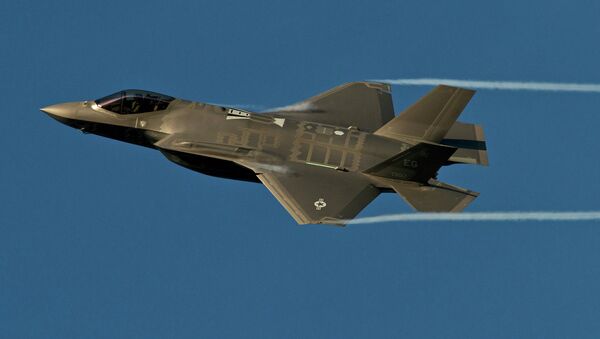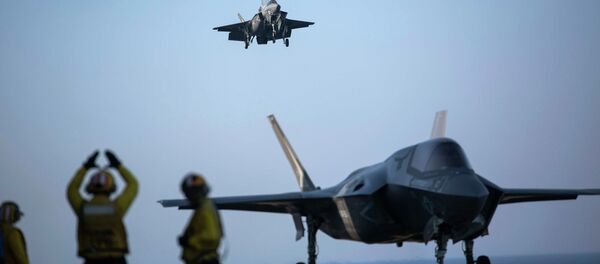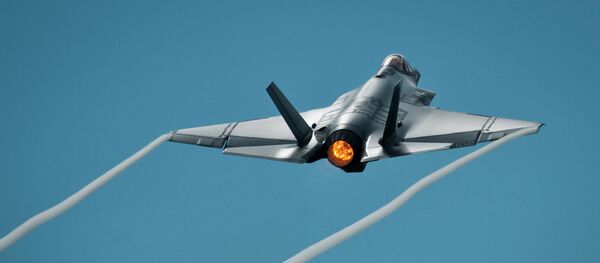After completing training exercises, the version of the jet designed for the US Marines appears likely to reach its initial operational capability (IOC) by July, as currently scheduled.
There are three version (A, B and C) of the Joint Strike Fighter — for the Air Force, Marines and Navy respectively — all manufactured by Lockheed Martin.
Marine fighter pilots on the USS Wasp have been taking their B variant of the F-35 — designed for vertical landings and short take-offs — through training exercises, and will soon move onto tactical exercises as the jet moves towards being declared combat ready.
The tactical exercises — called "Green Flag West" — are designed to test the military's ability to perform in surface-to-air conflicts and help the ground troops, who pinpoint potential airstrikes, prepare for combat.
— US Mission to NATO (@USNATO) May 22, 2015
"It's incredibly important that you've got to get past just the theoretical… to get it into the fog and friction of dynamic environment that is changing rapidly," General Herbert Carlisle, commander of Air Combat Command, told Reuters.
Several Air Force F-35 A models will participate in the tactical exercises as well, though their projected IOC date isn't until August 2016.
So far $400 billion has been spent, and 140 of the projected 2,443 jets ordered by the US military have been delivered. The projected costs to complete and then maintain the F-35 fleet now tops a cool $1 trillion. Five aircraft have been delivered to foreign military buyers.
There have been concerns about engine reliability, various software systems problems, and difficulties integrating different weapons systems into different variants.
Indeed, the Marines' version of the jet is reaching IOC first of the three partially because it will not integrate a full suite of weapons. And the Air Force's F-35 A, when it technically reaches IOC, will not be equipped with either its high-definition synthetic aperture radar known as "BIG SAR" or a weapon known as the Small Diameter Bomb II.
The UK, one of the foreign governments slated to purchase the F-35, has only ordered eight of its anticipated 150 jets because of cost overruns and production delays.
Former UK defense secretary Nick Harvey recently slammed the program as "one of the biggest white elephants in history," and said he didn't think there was a "cat in hell’s chance" that the UK's Joint Strike Fighters would be combat ready by 2018.




